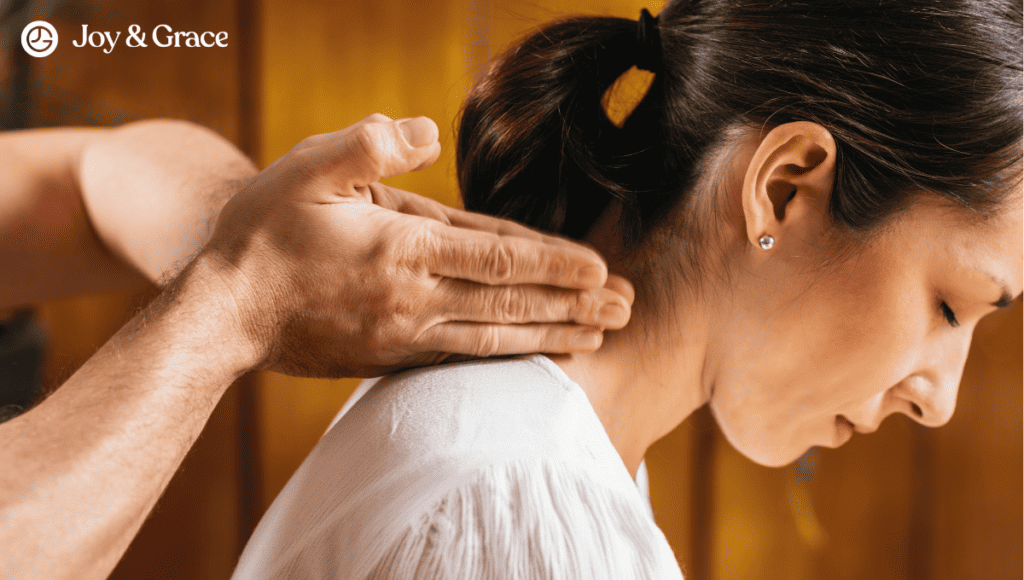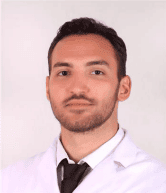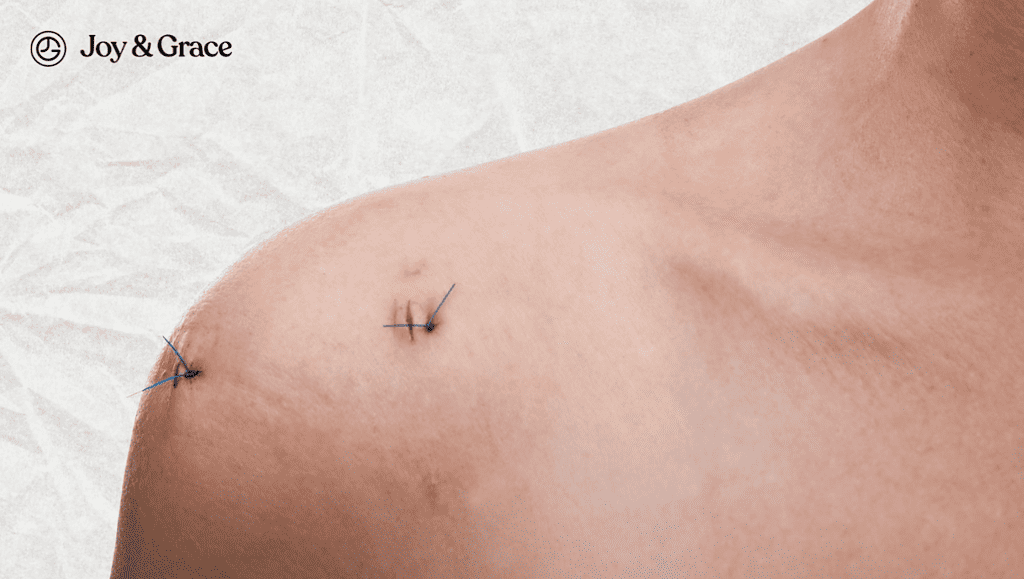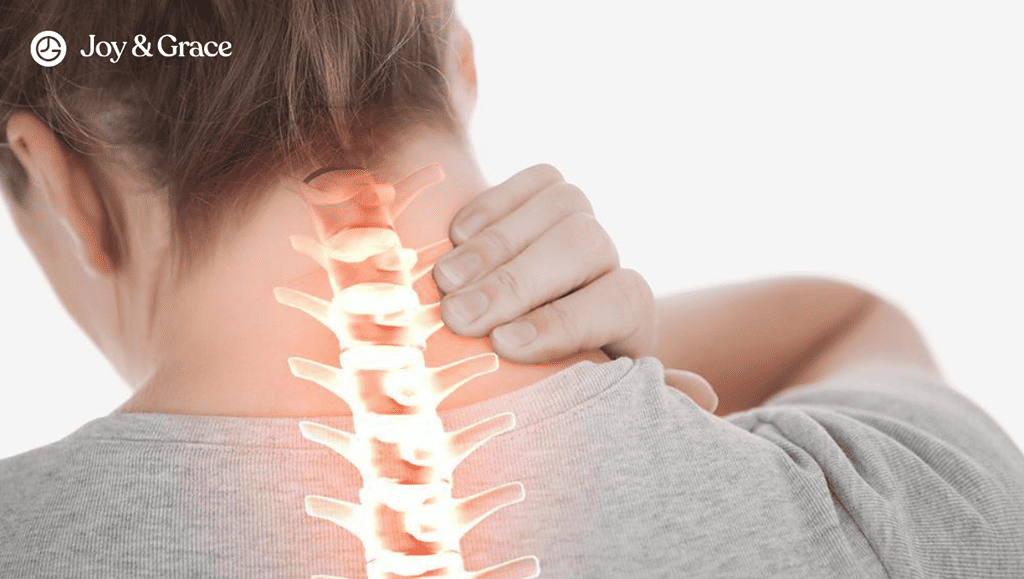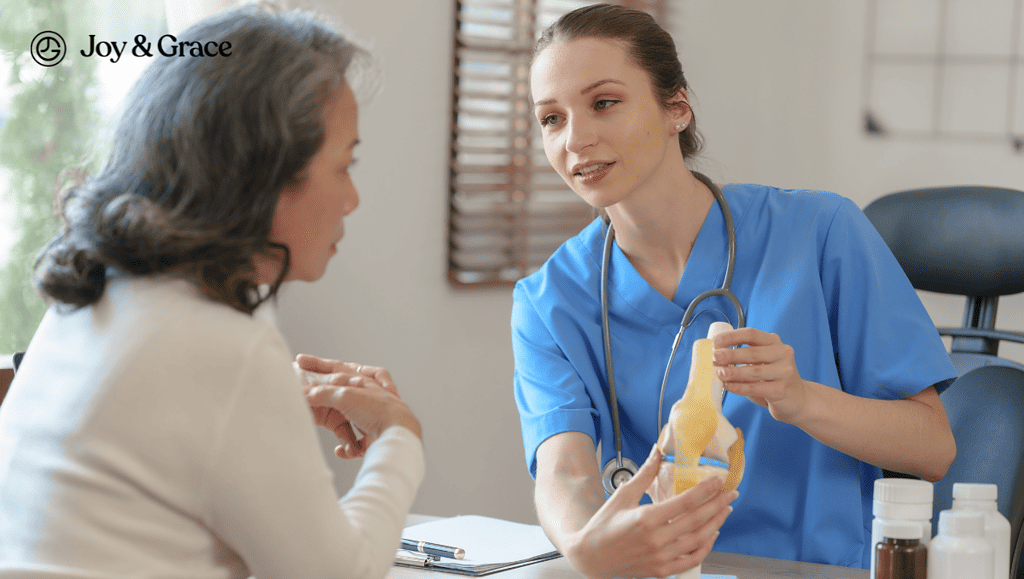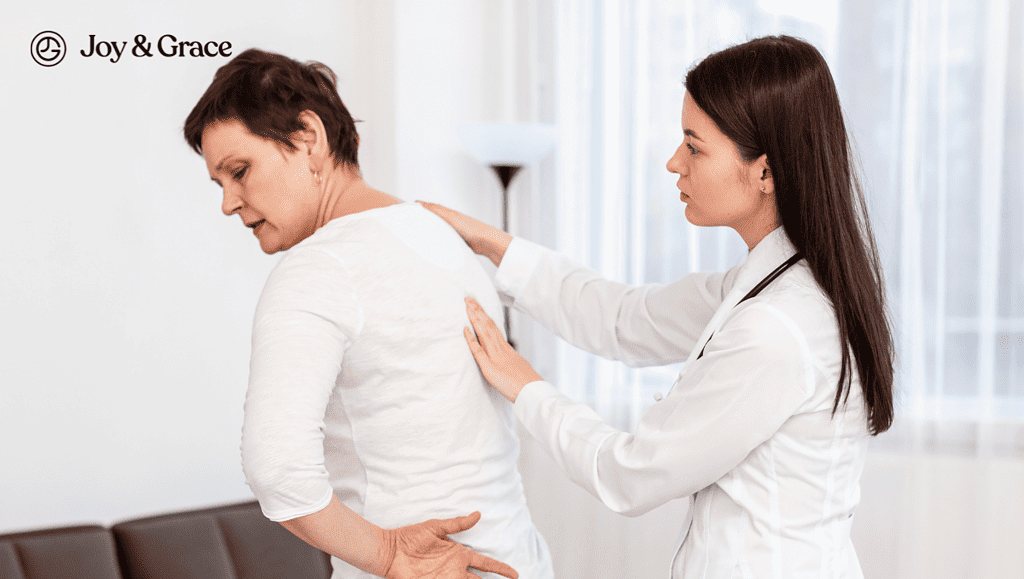Neck pain can (literally and figuratively) be a real pain in the neck. If you’ve ever dealt with it, you know that it affects every part of your day. So, how can you get rid of it?
A massage might just be the answer you’re looking for. Massage therapy has been used for pain treatment for centuries. So, how exactly should you start? Can you do it yourself at home? Let’s find out.
Can Massage Help Cervical Pain?
Disclaimer: If you have neck pain, consult your doctor first. Your doctor is qualified to tell you whether massage is suitable for your pain. If you decide on massage therapy without your doctor’s evaluation, you might risk causing even more harm to your neck. Also, avoid neck massages if you have a recent neck injury, bruises, open wounds, or any other medical conditions.
With that said, research shows that massage may be an effective treatment for cervical or neck pain. Studies tell us it can provide immediate relief for neck and shoulder pain.
This applies to chronic pain, too, at least in the short term.
By providing relief, massage therapy may also increase the cervical range of motion and improve life quality.
Neck pain is ranked among the top 10 causes of disability worldwide. It’s also associated with a high rate of recurrence. It has many causes. Thankfully, there are also quite a few effective therapies against it, such as massage therapy. Let’s see how it works.
How Will a Massage Fix My Neck Pain?
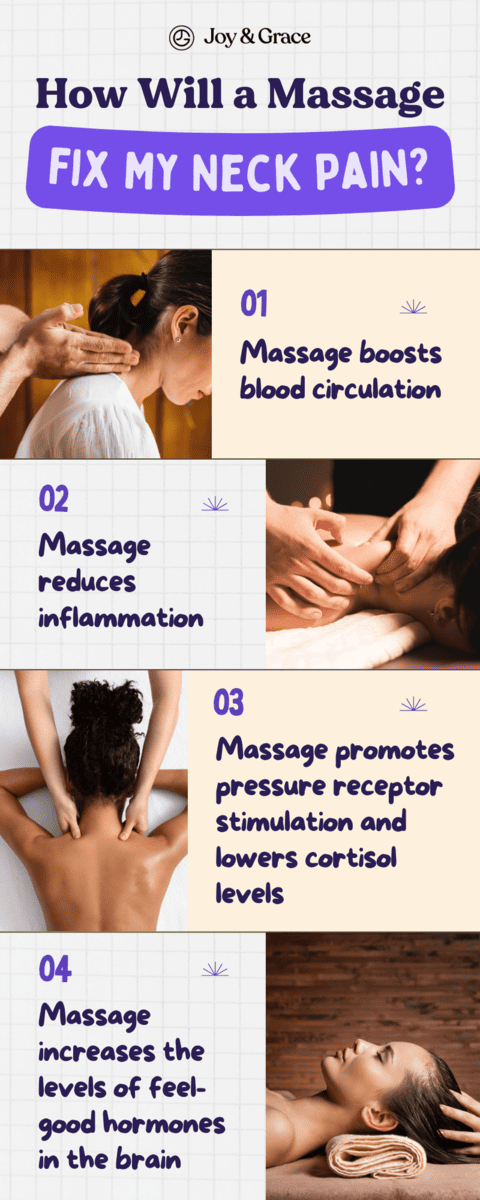
There are a few mechanisms by which massage therapy is thought to ease your neck pain. These may include the following:
- Massage boosts blood circulation.
A 2010 study has shown that massage can increase the temperature of the neck region, dilating blood vessels. This effect leads to more blood flow and oxygen flow. More blood and oxygen means faster tissue healing.
- Massage reduces inflammation.
Massage therapy may reduce and prevent neck pain and promote recovery. It can achieve these effects by meddling with inflammation processes.
- Massage promotes pressure receptor stimulation and lowers cortisol levels.
By stimulating pressure receptors, massage can enhance the activity of a nerve called "the vagus nerve.” Increased vagus nerve activity results in tissue pressure relief and reduced cortisol levels. Cortisol is also known as the “stress hormone.” Elevated cortisol levels due to prolonged stress can negatively impact your health.
- Massage increases the levels of feel-good hormones in the brain.
These hormones include serotonin and dopamine. They’re “feel-good hormones” because their release makes you happy and satisfied.
Does Massage Help Tight Neck Muscles?
Yes. The neck region contains many muscles that may suffer from strain or injury. A strain or injury can lead to tight muscles and pain.
Massage works by manipulating the muscles and soft tissues of the neck, which can help relieve the tightness.
Therapists can reach the many layers of muscle and the surrounding tissues through various techniques. These may include kneading, stroking, and compression.
What Type of Massage is Best for Neck Pain?
There are many ways to give a massage. This means that different massage types may work better for different people. Hence, “the best” type of massage is a relative term. Consult your doctor to discover what may work best for you.
Here, we list the most popular and effective massage types for neck pain.
Swedish Massage
A Swedish massage is one of the most gentle massage techniques. It belongs in the group of Western-type massages as it’s more commonly used in Western countries, such as the US and European countries.
This type of massage uses long strokes, kneading, circular motions, and tapping. A Swedish massage targets the uppermost layer of muscles and aims to relieve muscle tension. It’s helpful against neck pain, shoulder pain, and lower back pain. The Swedes really came through with this one!
Trigger Point Massage or Myofascial Release Therapy (MFR)
Trigger point massage is also known as myofascial release therapy. Evidence suggests this massage therapy may help even more than standard physical therapy against neck pain. It may also improve the neck’s range of motion and life quality.
Trigger point therapy focuses on specific sore spots or knots in the neck muscles. It aims to decrease pain and improve muscle function. One of the main neck muscle targets is the trapezius. The trapezius is a big, triangular muscle that covers the neck and upper back. MFR on the trapezius trigger points has proven successful in achieving pain relief.
Deep Tissue Massage: Can Deep Massage Help Neck Pain?
Yes. A 2019 study found that deep tissue massage alone or combined with exercises could treat subacute and persistent neck pain. Adding strengthening and stretching exercises to this massage may help to maintain the effect over time.
This massage technique targets deeper layers of connective tissue and muscle. It uses a slower stroke with forceful pressure to reach deep. If you are recovering from muscle injuries, a deep-tissue massage might come in handy.
Chinese Traditional Massage
Chinese traditional massage is one of the oldest known types of massage. It forms the basis of the Eastern-type group of massages.
Various types of Chinese traditional medicine have proven effective against neck pain. One example is Shiatsu massage, also known as acupressure. It involves putting pressure on certain so-called “pressure points” of the body.
Another example is Gua sha, a traditional East Asian healing technique. In this massage, the body surface is stroked with a smooth-edged instrument to raise therapeutic skin marks.
Thai Massage: Is Thai Massage Good for Neck Pain?
This massage technique incorporates yoga along with traditional Chinese herbs and Indian practices. It’s believed to be thousands of years old. A 2021 study suggested that Thai massage can effectively treat chronic neck pain.
Tuina Massage
Tuina is an ancient healing art that uses fingers and strength. It belongs to the eastern group of massages.
During a tuina neck massage, the spinal joints are worked upon with the lightest strength for as short a time as possible. This technique is thought to achieve successful chronic neck pain relief.
Sports Massage
Sports massage involves a core concept similar to Swedish massage. It combines the movements of Swedish massage with muscle stretching. Sports massage helps treat and prevent injuries in athletes.
Craniosacral Therapy
This massage intends to remove knots in the skull and spine. It claims to improve the flow of the cerebrospinal fluid around these structures.
Classical Strain/Counter Strain Technique
Strain/Counter Strain (SCS) is an osteopathic massage technique for neck pain. This means that osteopathic doctors are typically the ones who practice it. SCS involves gentle and superficial manipulation of the neck trigger or tender points. SCS can be performed on the front or back of the neck and is considered a safe procedure.
Hot Stone Massage
This technique aims first to stimulate muscles and ligaments with heated stones. These stones are placed on your neck and other painful areas. Then comes the massage treatment, which is supposed to relax the painful areas.
What Type of Massage is Best for Chronic Neck Pain?
Chronic neck pain is neck pain that persists for more than three months. As discussed earlier, there is no “best” massage type for neck pain. Any massage therapies we listed, including the Western and Eastern types, may apply.
However, it’s important to understand that massage therapy is usually not the sole therapy for chronic conditions causing neck pain. Your doctor may devise a tailored plan that involves other forms of treatment, such as:
- Pain medications (such as Tylenol and NSAIDs)
- Physical therapy and exercise
- Steroid injections
- Lifestyle changes and home remedies (rest, ice, and stretching)
How Do I Massage My Neck for Cervical Pain?
If you were wondering, you can also perform a self-massage on your neck (and include your shoulders, too). Let us show you how! All you need to do is set aside 15 minutes of your time and follow the numbered steps.
- Start by sitting tall and focusing on your neck and shoulders.
Feel your neck, shoulders, and head position. Keep your head straight by aligning your ears with your shoulders. Imagine that your head is floating up. This idea will help you maintain a naturally straight posture. It will also avoid shoulder and neck stiffness.
- Gently turn your head on both sides.
Slowly and gently turn your head to the left as much as possible. Notice the furthest thing you can see (its shape, color, etc.). Repeat the same on the right side. Then, bring your head back to the starting position.
- Tilt your head to one side and squeeze your neck.
Squeeze the left part of the back of your neck with your right hand. You can use your left hand for the right side later when you switch sides. Apply only firm pressure with your fingers. This will warm up your neck.
- Find a pressure point on your neck.
A pressure point is commonly found in the upper trapezius muscle. Locate the spot where your neck meets your shoulder. Then, locate the spot where your collarbone meets your shoulder blade. The trapezius pressure point is located between these two spots.
- Compress the pressure point with two fingers.
Again, the pressure should be moderate and gentle. We’re still working on the back part of the neck.
- Imagine you’re drawing tiny circles with your fingers.
While pressing firmly, make small, rotating movements on the pressure points. Adjust your fingers for a few millimeters to locate better spots.
- Move your head by focusing on your nose.
Hold your fingers on the pressure point, and imagine you’re drawing tiny circles with your nose. After circles, draw some straight lines. Your head movements should be slow and easy.
- Squeeze the same side of the neck and return to the starting position.
Remember to maintain good posture at all times.
- Repeat steps 3–8 on the other side of the neck.
If you started with the left side of the neck and your right hand, simply switch sides. Continue with your right side of the neck and left hand.
- Squeeze the central back of your neck up and down.
After returning to the starting position, position your hand directly on the back of the neck. Start squeezing up and down. Apply moderate pressure, as always. Repeat the same process with your other hand.
- Draw circles with your thumbs on the base of your skull.
The base of your skull is known as the occipital part. Use both of your thumbs to draw circles on this part.
- Move over to the back of your ears.
Continue drawing circles and crescent shapes on the hard part at the back of your ears. The hard parts represent the location of the mastoid process on both sides. They are attachment points for the sternocleidomastoid and scalene neck muscles.
- Release your arms and take a deep breath.
You’re almost done! At this point, your neck pain might feel much better. But don’t stop here! The next steps are some of the most important.
- Grab the back of your head by interlocking your fingers.
Put your hands on the back of your head and interlock your fingers. Your thumbs should be right at the occipital ridge. This is a horizontal (and noticeable) ridge on your skull. Keep your elbows straight and your shoulders down. Push your head toward your hands and your hands toward your head equally.
- Release your arms, and repeat step 2.
Return to the starting position. Slowly turn your head left, then right, and pay attention to the furthest thing you can see. You might notice a slight improvement in your neck rotation.
- Finish by returning to the starting position and taking a deep breath.
Feel your head floating up, and align your shoulders with your ears again.
And just like that, you’ve done it! Your neck and shoulders will feel much more relaxed than before.
Where is the Massage Point for Neck Pain?
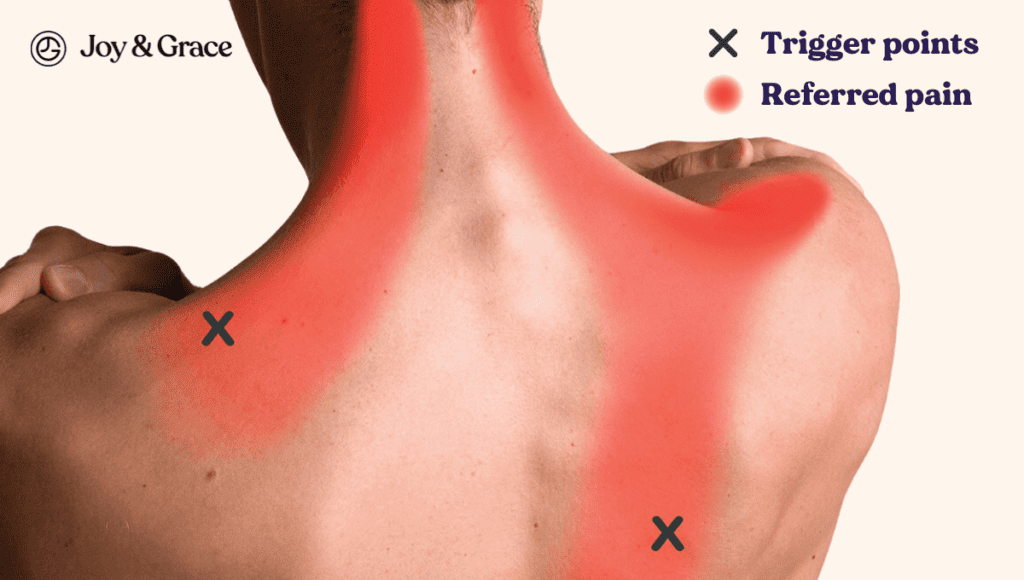
As mentioned, massage points for neck pain are the most tense spots in the neck area. These mischievous spots are responsible for most of your neck pain and discomfort. They’re known as neck pressure or trigger points.
Trigger points represent the areas that massage therapists target to reduce neck pain. A muscle trigger point can be located based on the following criteria:
- The point or spot is hypersensitive and tender. It’s situated in a tense neck muscle band.
- The patient recognizes the pain as “familiar” when compression is applied to the point.
- The patient feels pain when the neck muscle (including the trigger point) is stretched.
One example of a massage trigger point can be found in the upper trapezius muscle. It’s usually located on the upper back or neck, halfway between the lowest part of the side of the neck and the shoulder tip.
How Long Should I Massage My Neck? How Often Should I Get a Massage for Neck Pain?
What’s the ideal duration for a neck massage? A 2014 study compared the effects of a 30-minute massage session to those of a 60-minute massage session after five weeks of therapy. It found that receiving massages for 60 minutes, 2-3 times a week, showed superior results. These sessions significantly reduced pain intensity and improved neck function. It's time to get the calendar out and make a schedule!
What to Avoid in a Neck Massage?
Neck massage is a generally safe practice. If it’s performed correctly, that is. Massage therapists must always ensure they’re applying the correct techniques. We say this because incorrect neck massage and manipulation can lead to various (and even dangerous) side effects.
Vigorous movements and too much force need to be avoided at all costs. Sure, some soreness after a neck massage is normal. It goes away in a few days. However, improperly performed neck massages can actually worsen neck pain and muscle tightness and even cause nerve damage.
The most severe complication of a vigorous neck massage is vertebral artery dissection (VAD). VAD may happen if the vertebral artery is disrupted. The vertebral artery sends blood to the brain. Disruption of the vertebral artery may very rarely occur after a neck massage. It can present with symptoms like headaches, vomiting, and blurred vision. But it may progress to a stroke, a potentially fatal disease.
Remember: The most effective way to prevent complications is to talk to your healthcare provider before starting massage therapy.
Takeaway
Yes, massage may be a helpful treatment for neck pain. Studies tell us it can provide immediate relief for neck and shoulder pain.
By providing relief, massage therapy may also increase the cervical range of motion and improve life quality.
There are a few mechanisms by which massage therapy can ease your neck pain. These may include the following:
- Massage boosts blood circulation.
- Massage reduces inflammation.
- Massage promotes pressure receptor stimulation and lowers cortisol levels.
- Massage increases the levels of feel-good hormones in the brain.
Massage works by manipulating the muscles and soft tissues of the neck. Therapists use various techniques, such as kneading, stroking, and compression.
Some of the best and most common types of massage include the following:
- Swedish Massage
- Trigger Point Massage or Myofascial Release Therapy (MFR)
- Deep Tissue Massage
- Chinese Traditional Massage
- Thai Massage
- Tuina Massage
- Sports Massage
- Craniosacral Therapy
- Classical Strain/Counter Strain (SCS) Technique
- Hot Stone Massage
There are also self-massage techniques you can perform on your neck at home. 60-minute massages, 2-3 times a week, significantly reduce pain intensity and improve neck function.
Massage points for neck pain are the most tense spots in the neck area. They’re known as neck pressure or trigger points.
Neck massage is a generally safe practice if performed correctly. Vigorous movements and too much force need to be avoided at all costs.
The most severe complication of a vigorous neck massage is vertebral artery dissection.
It occurs very rarely but may progress to a stroke.
